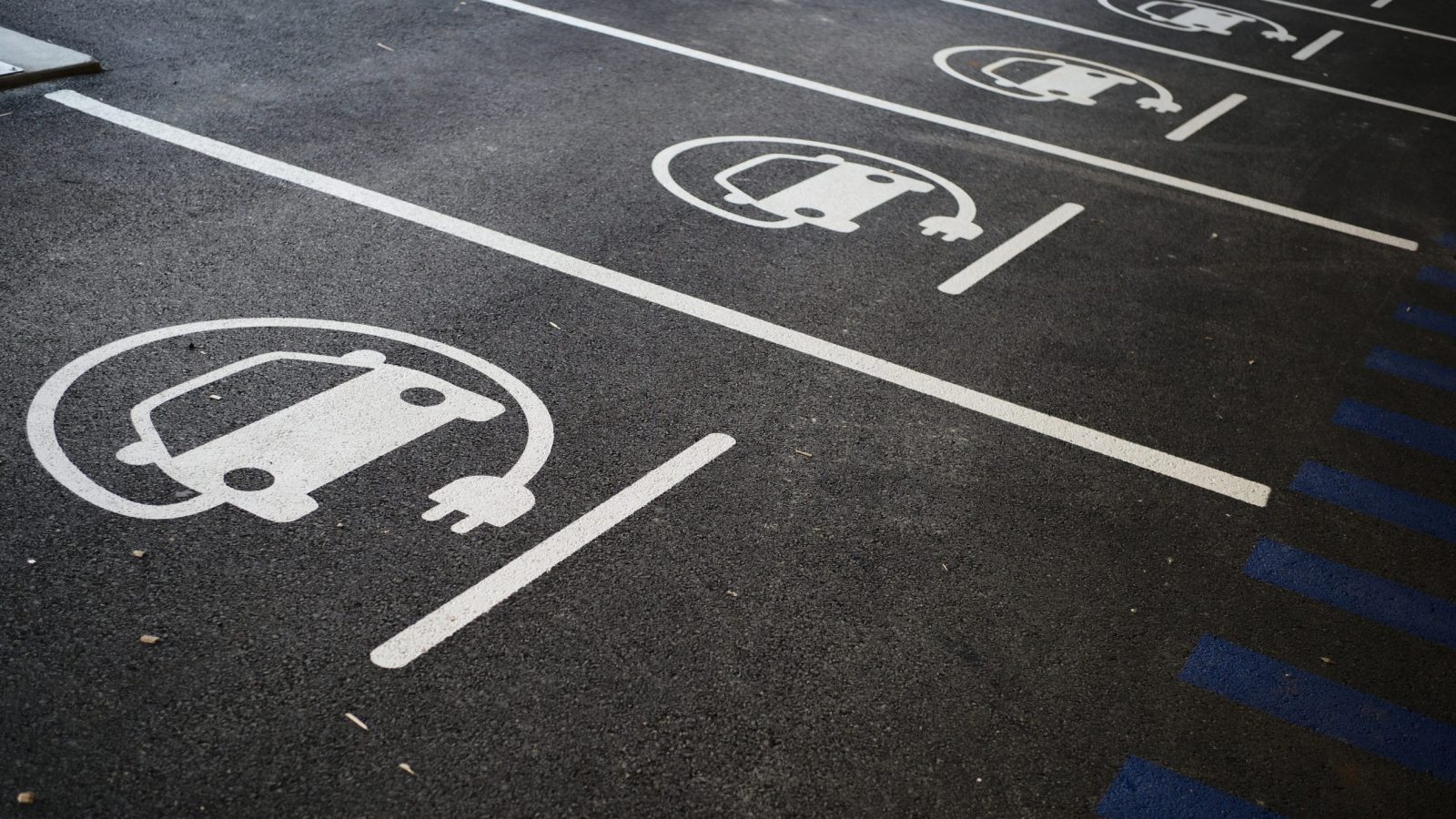My assumption would be that they’ll work better.
The scariest part of technology is software updates.
Companies should be required to maintain a stash of plans and source code which is automatically released upon the company stopping operations, unless the IP is bought.
unless the IP is bought
It’s always bought on liquidation. The creditors require it to be sold to legally satisfy them. What’s worse is that the IP may only be licensed in the first place.
Novell was re-awarded OS code which it sold – a term I use based on talking to people in the room on both the seller and buyer side of the negotiation table at the time, but merely second-hand knowledge. Novell was awarded ownership as the fact of the sale became a poker chip in a US$5bn lawsuit that could be refuted to give an advantage to one adversary in that lawsuit.
Novell hasn’t done a thing with it in 20 years. The code is essentially dead because it would cost too much to restart and update.
This was how the original Unix died, and doesn’t violate your plan. Counterexampled?
The whole IP paradigm needs to change. I can accept the logic that IP needs to exist in the first place so that people who invent something can get paid (at least in our current system) - but the term should be shortened to something like five years, or if it’s going to be longer there needs to be a list of events that immediately invalidate it, including the product no longer being legally available. IP shouldn’t be able to be traded between companies like a commodity, and it shouldn’t be able to be locked up to prevent it from going into the public domain.
I think the bigger issue is that IP rights can be held by corporations at all. Yes, it should be shorter, but it should also only be able to be owned by individuals.
Copyright and patents, at least. I guess trademarks make sense to be owned by companies.
I mostly agree, but five years often won’t score your ROI. I especially think entertainment IPs should fall into the public domain faster. 70-years after the author’s death is a fucking joke.
If, god forbid, Steven King croaks tomorrow, his work should go public after a few years (to resolve estate issues).
Ever drive in a car with a big screen from like 10+ years ago that has the most outdated, useless UI?
Now imagine that’s your whole car.
You can get that experience with new cars too. Especially anything made by BMW who presumably don’t extend their craftsmanship ideals to their software.
I reckon it all comes from the stupid ass tesla hype, both Hyundai Group then later VW Group came out and said they will be putting back physical buttons.
Other than that, they should also fuck off with their software, make it be able to control the functions of the car, everyone uses carplay/android auto anyway, so what’s the point of all the other stuff.
I miss the days when the radio was its own separate thing in a car. Hate the outdated UI? Just replace the radio head unit with a modern one.
Nowadays it’s a lot more difficult. There is a module called iDatalink Maestro that allows you to still maintain most factory features after replacing your head unit, but a lot of cars tend to be incompatible—especially EVs—as more and more features become integrated into the stereo. The days of modular components in cars is nearing an end.
The days of modular components in cars is nearing an end.
It’s a shame, because with EVs especially modular everything should be a whole lot easier than ever before. I guess it took a decade and a half for governments to force smartphones to be able to be jailbroken or use the same messaging protocol, hopefully we see a similar evolution on EVs where these locked down features get forced onto common standards.
This is why I think the people modding cars to be evs are so much better.
Will VW support Rivan owners ?
I saw a YouTube video where a guy had a dent in the back left of his rivan and the body shop wanted 40k to fix it because the car is really easy to work on.
Seeing as my car works when an internet connection is not available it will work. The bigger issue is charging networks. If Tesla went belly up, then charging on their network (L2 chargers should be fine unless they configured to not be free) would be dicey.
With more market saturation, we’ll see more standardization. Imagine if the original ICE cars took a proprietary gas pump. LOL, the market would have fixed that horseshit with the quickness.
A huge selling point for pistol-caliber guns is if they take Glock magazines. They’re cheap, reliable and available everywhere. I’ll likely never own a Glock, but magazine compatibility would sway my purchase towards another manufacturer that doesn’t have a proprietary mag.
Charging will eventually be a self-solving problem. Right now it seems the manufacturers are trying to get ahead by saying, “Our model charges at X (number of) stations! They only have Y. Pick me!” If I can ever afford an EV, the most standard, “normal” option, whatever this is, is where I’m buying.
And if the free market doesn’t quickly arrive at a standard, time for the legislative hammer. While I’m leery of fucking around, I do so love how Europe says, “Nope! Every device sold here must be compatible.” Phone chargers and such.
That’s cool and scary but it also (mostly) applies to most new ICE cars as well.
Can you explain how? I’m at a bit of a loss how.
Most cars nowadays, EV or not, are cloud-connected and designed with build-in obsolescence.
So why couldn’t a Haltech and an aftermarket infotainment system work?
No such aftermarket infotainment systems exist. Modern cars are way too locked down and way too tightly integrated for an aftermarket to feasibly exist.
Which SUCKS, I miss the DIN system in older cars where you could just put nearly any head unit in nearly any car. Sadly those days are gone.
I don’t think a Haltech ECU would pass inspection in most US states. I’ve had trouble getting my golf inspected with just a cat and a flash tune. There are emissions readiness monitors in most stock ECUs that need to show up for it to pass. The exhaust and tune i have aren’t even sold anymore because of the increasing number of legal restrictions. I get why it has to be that way but it does suck for people who want to work on their car.
Usually the issues runs deeper than that. Most new cars are on a canbus system.
Electronic Control Units (ECUs) are components that control certain functionality - e.g. the engine control unit, transmission, brakes, steering, temperatures etc. A modern car can easily have 70+ ECUs - each sharing information with other ECUs on the bus.
My door locks, windows, mirrors, etc. all controlled by canbus modules.
I believe it was Toyota that got yelled at because you couldn’t remote start your car with the key fob which uses radio waves without paying for the subscription to remote start from your phone. The car was wired to receive the start signal (fob/modem) then feed the request through the canbus system which then pinged out to their subscription service to find out you didn’t have access. I believe they have since fixed that due to public backlash.
I’m sure people will find a way to tweak all that or basically mock out the ‘ping home’ to always say you have access. But just replacing electronics could lead to so much stuff just not working even if you get the engine running with an aftermarket ECU. Also if your state has emission testing to register your car…it’s almost guaranteed to fail.
Everything is locked down behind propriety firmware and protocols.
I look forward to the day when my refrigerator stops working because the company went bankrupt, or because their server was down.
Samsung are pretty close.
That’s not on purpose they are just defective shit boxes engineered by the cheapest guy on fiverr
I’m looking forward to the “how to hack your Tesla to 100% operational functionality using a raspberry pi 9 and this dongle, run your car with your phone!” youtube videos (or whatever streaming service steps over its flaming corpse to replace) it in the next few decades
Opencore Legacy Patcher, but for cars. Nice.
Should be happening now but I understand these things take time.
And somehow the RPi9 will still need some $90 5V20A USB power supply
You can connect it to the Tesla’s battery and it will drain them more in 5 minutes of operation that driving the car for 200 miles does, but at least it will be able to run a full LLM and render billions of triangles with full raytracing at 200 fps on a 4K display.
I’ve been waiting years for Tesla hacks to add power or remove Autopilot or remove software-locked batteries or unlock paid features. Haven’t seen it anywhere.
https://ingenext.ca/products/boost-50
50 hp for $1k
I can’t find them right now, but there are similar things you can buy to unlock factory features at a discount.
People have already been jailbreaking Teslas to unlock full self-driving, which is a $10k software patch.
Wait, a Tesla in its default configuration doesn’t allow self driving?
No it has always been an additional purchase. The only “self driving” mode that’s included by default is their “auto pilot”, which is just TACC with better lane assist so it can take sharper bends in the road without “bouncing” between the lines like most other cars do with lane assist.
Most people seem to incorrectly think that autopilot and FSD are the same thing, but they are not.
Most people tend to incorrectly think
I mean, Musk and Tesla oversold and mismarketed the feature. Don’t blame the consumer here.
They distinctly labeled them with names that are not even remotely close in wording, one even with a very clear and precise name of the intended feature set (FSD). I can’t really see how people can think they’re the same TBH, especially considering the clear distinction between the two on their website.
I 100% agree the feature set of FSD is false marketing and wildy misleading as it’s currently not even close to delivering anything beyond level 2 autonomy, and hasn’t for the past decade since they announced it was “ready end of year”, albeit still more capable than the auto pilot feature (at least in the closed beta).
Yes, I can’t see why people would hear ‘Autopilot’ and think it had anything at all to do with full self driving.
Why would they when the website specifically and quite clearly distinguishes the two…only a person that makes no effort to understand what they’re talking about would get confused and continue to spread false information.
Aside from cosmetic upgrades, all Teslas are essentially the same, just with certain features disabled/pay walled. So your base model 3 has the exact same battery as the top of the line version because it is cheaper to manufacturer them all that way.
That’s just not true. Go to https://ev-database.org/ and compare the dry weight of the different models. You don’t add 66kg going from standard to long range in software.
That’s correct, there are some respected engineering channels that specifically mention this is why different models of the same EV require different charging behavior per the manufacturer’s manual. The battery compositions are different and have different densities and characteristics.
Edit: although it’s possible some models could share the exact same battery model and have some software restriction in place.
Idk, have you seen software bloat these days??
You’re both right, some teslas were sold with their battery software limited. And able to be unlocked via DLC.
No it has always been an additional purchase. The only “self driving” mode that’s included by default is their “auto pilot”, which is just TACC with better lane assist so it can take sharper bends in the road without “bouncing” between the lines like most other cars do with lane assist.
Most people seem to incorrectly think that autopilot and FSD are the same thing, but they are not.
No, autopilot is now also an additional feature
That seems to be region specific then, because I just checked and autopilot is still included by default where i live (northern Europe). Only enhanced autopilot and FSD are additional purchases here.
additional purchase
😂 people pay to be guinea pigs? Wow…
Welcome to the tech early adopter world.
I for one are very happy that there are so many
suckersbrave bleeding edge tech adopters willing to spend the money and endure the amateur-hour technology put together with spit-and-chewing-gum so that the rest of us get to enjoy the handful of trully useful stuff that survives to become mature products.Somebody has to be the cannon-fodder in battling all the fraud and bullshit of present day “Tech” “innovations”, and I for one am glad there are so many volunteers.
You shouldn’t be happy about that, if for no reason other than other drivers (and pedestrians, cyclists, etc) are put at risk of these systems’ limitations, and folks relying on them more than they ought to.
That’s up to regulators: even brand new “innovative” electronics devices that plug to mains power still have to obbey regulations to protect people from electrocution, so similarly self-driving vehicles should have to obbey regulations to protect people from being killed by them.
If they don’t have to obbey such regulations or the regulations are insufficient, the blame is on the Regulators, which generally means the blame is on Politicians.
It’s not up to buyers, early adopters or otherwise, to have the technical expertise to determine if something they’re buying is dangerous (often not even experts can tell without actual disassembly and lab testing).
I mean, that’s not really unique to Tesla customers in any way. Lots of people like to be early adopters of new things, tech more than other things I believe. More often than it’s not very good when they buy in to it.
When those things are on wheels, though…
There is no such thing as “self driving”. It’s literally just a blatant marketing lie. Tesla has:
- Autopilot - comes as standard on all vehicles, most other OEMs refer to this as “advanced cruise control” as all it does it maintain speed and keep you in your lane.
- “Advanced Autopilot” - more commonly referred to as “FSD”, adds things like automatic lane changes, summon)
- “Full Self Driving” - the most advanced option with all the available features.
Prices for these vary but the latter 2 are both several thousand dollars.
That should be a thing - some place where all the connectors from various parts are marked and you can just remove the Tesla brain and put an RPi in place.
But I don’t think it is =\
Well, someone did it at least partly: https://www.youtube.com/watch?v=zdPRhkbeQJk
Altough in this case it’s to improve acceleration, not anything related to privacy.
This is not just something that can impact EVs. NFC door locks, smart infotainment, displays for gauges. None of that is EV specific these days.
These cars were clearly not designed to work without cloud connectivity and or an authenticated account. That seems bonkers. China is huge and has lots of remote areas. How were these cars going to work when they couldn’t phone home?
IMHO, a lot of cars have gone way overboard with “smart” features, but this manufacturer’s problems are the result of cutting corners and not designing for some common use cases.
Or when the network that the car relies on no longer exists. My old e-reader’s mobile connectivity no longer works because the phone company providing the service turned the 3G network off in the upgrade to 4G.
It’s just 17 years old. People tend to keep cars for about that long. What happens then? Does it just become limited to basics only, or become a big metal brick?
People stop paying for smart car’s online services all the time.
You typically lose access maps or only get basic offline maps without traffic and charging stations listed. You also lose the ability to use streaming apps, the ability to remotely control locks, windows, cameras and climate from your phone, stolen vehicle tracking, alarm notifications, etc.
But if you have CarPlay / Android auto, the good maps and streaming apps can be pumped in from your phone.
I’ve never seen Android Auto work worth a shit. I use a charge-only USB cable to prevent my phone from trying to connect. The only use I have for the infotainment system is as a smooth flat surface on which to attach an adhesive phone mount.
At least the cars can be updated (at least until the manufacturer says fuck it). A ton of those ‘smart’ devices have no such capability so when a vulnerability is found it won’t ever be fixed.
This is why I won’t touch a car that doesn’t have Android Auto, CarPlay, etc. I want to be able to update my audio apps and maps, even when the manufacturer decides to stop updating my head unit.
that only shifts the problem to Apple and Google, neither of which can be trusted to keep supporting older versions of CarPlay or Android Auto as the years go by and they change shit around.
Possibly, but these technology are a decade old, their product roadmaps still look very robust, and a lot of drivers actually base new purchase decisions on that feature’s availability.
IMHO, it’s low risk, and if it does get killed, oh well. Voice control and a dash mounted phone isn’t the total end of the world.
Disposable cars is where we’re headed. We allowed it with electronics, why wouldn’t we allow it with cars?
The ages of cars on the road has been increasing. As reliability and prices continue to go up, more and more people hold on to their cars.
When they can. They may not be able to in the future.
Maybe. I don’t know of any other car brands that totally shit the bed when the cloud services get cut off.
How many have been cut off? Fisker will probably be first to go.
To be fair, Fiskers are likely to brick themselves and the company is still alive. They have some of the worst software in the auto industry.
That said, my point is that a lot of “smart” cars are designed work just fine offline. Being offline is common in rural areas and or when the driver decided to stop paying for mobile connectivity.
I’ve done the latter with a couple cars. You lose the ability to download new maps, see traffic, install updated streaming apps, and or remotely control climate / windows / locks with your phone. But I use my phone for music maps, and I don’t really care about unlocking the car with my phone.
a lot of “smart” cars are designed work just fine offline.
Citation? I don’t see anyone testing that because people don’t seem to care.
NFC door locks have a sliding panel with a key override. Usually a shit lock that can be opened by any amateur… One of the many reasons I don’t have one.
NFC door locks, smart infotainment, displays for gauges
And I don’t need any of that.
Give me a simple car and I’ll buy it.
Looking at Aging Wheels YouTube channel with his fleet of non working Wheegos, the answer is no, they won’t.
A lot of his problems are also from the lack of available parts.
Which is why he has multiples of some of the orphaned cars in his fleet.
That’s why I bought an electric car from a car company. Mostly the same parts besides the drivetrain.
Yeah, I got a Bolt EUV last year. No regrets so far.
I got a Kia EV6, the only negative is they used an older infotainment system so i don’t get wireless android auto. When the new ones come out for the same car I went to see if I can get it changed out.
cars? what about all those charging stations that don’t have payment by card and require you to setup an account through a mobile app like what kind of cuntery is that.
Its an asset, it will be sold off, spun off or recovered.
A lot of car parks are becoming like this. It’s especially frustrating when you try to download the app but you have no signal and there’s no other way to pay.
I checked it and remembered correctly that in the EU at least they made it mandatory to have it on chargers
The new EU regulation AFIR (Alternative Fuel Infrastructure Regulation) stipulates that fast-charging stations with an output of 50 kw or more must be equipped or retrofitted with the option of card payment with immediate effect. The AFIR came into force on 13 April 2024 and takes precedence over national laws.
My favorite thing about that is when you fill in the required info and need an email but because you gotta enter it each time using a temporary email doesn’t work. Then you get spammed to death by them…
Cars are the tip of the iceberg. What about smart home appliances, like garage door openers, or door locks? They all come with their stupid apps, and once the company is dead, suddenly your home stops working.
We really need mandatory standards: post APIs for client-server connectivity and make the connection URL configurable.
There are a lot of manufacturer-agnostic smart home devices out there, and with just a tiny bit of research online it’s not difficult to avoid anything that is overly tied to a cloud service. Z-wave, ZigBee, Thread/Matter devices are all locally controlled and don’t require a specific companies app or environment — it’s only really the cheapest, bottom-of-the-barrel WiFi based devices that rely on cloud services that you have to be careful of. As with anything, you get what you pay for.
Even if the Internet were destroyed tomorrow, my smart door locks would continue to function — not only are they Z-wave based (so local control using a documented protocol which has Open Source drivers available), but they work even if not “connected”. I can even add new door codes via the touchscreen interface if I wanted to.
The garage door scenario can be a bit more tricky, as there aren’t a lot of good “open” options out there. However, AFAIK all of them continue to work as a traditional garage door opener if the online service becomes unavailable. I have a smart Liftmaster garage door opener (which came with the house when we bought it), and while it’s manufacturer has done some shenanigans in regards to their API to force everyone to use their app (which doesn’t integrate with anything), it still works as a traditional non-smart garage door opener. The button in the garage still works, as does the remote on the outside of the garage, the remotes it came with, and the Homelink integration in both of our vehicles.
With my IONIQ 5, the online features while nice are mostly just a bonus. The car still drives without them, the climate control still works without being online — most of what I lose are “nice-to-have” features like remote door lock/unlock, live weather forecasts, calendar integration, and remote climate control. But it isn’t as if the car stops being drivable if the online service goes down. And besides which, so long as CarPlay and Android Auto are supported, I can always rely on them instead for many of the same functions.
Some cars have much more integration than mine — and the loss of those services may be more annoying.
1000%, we need to demand minimum functionality or stop perpetuating these fucking things by purchasing flawed products from flawed companies.
Or, you know, regulate them
Sono Sion shut down, and good luck even getting your money back. Of course and shamelessly, Sono Motors and their CEOs get to continue to cruise through it. Wait EV startups out until they release is my advice, too much of an industry and competing markets locking new competition out. The only incentive to purchase into them, paying less, is also what puts your money at risk.
Sono Sion wasn’t even Chinese. it was fully German. The dangerous thing about Chinese EVs is that they are much more certain to deliver, and that gives more of a false sense of security that they will continue to maintain and conform to regulations.
Will a new anything work if the manufacturer kills off the entirely unnecessarily forced network features?
This is not an EV problem, this is an MBA grifting problem.
Still, as from a mechanical engineer perspective I would trust slightly more a combustion motor system to work offline rather than an electrical, where I could never know how the motor really works and relays on.
Personally I enjoy driving a 1987 bensine Ford.
The same is true of any modern ICE, you’re not exactly gonna get source code or schematics for drivetrain management
I also do have a degree in mech eng and electrics as well. Electrics are much, much simpler, the reason EVs have a reputation for being hard to service is that they are new and chock full of online bullshit, which is true of new ICE cars as well. If it was just the battery and the motors, it’s incredibly simple.
What would be more complex an electric fan, or a fan with an internal combustion engine? It’s all the add ins that make cars complex. The motors are always simple.
I think ford and gm have turnkey crate motors and I suspect the vehicles have the same systems. Might be fun problem to solve.
I don’t think it’s too far out of the realm of possibility considering numerous people buy crashed/scrapped EVs and adapt them into old vehicles or modify them into Franken-cars on Youtube.


















